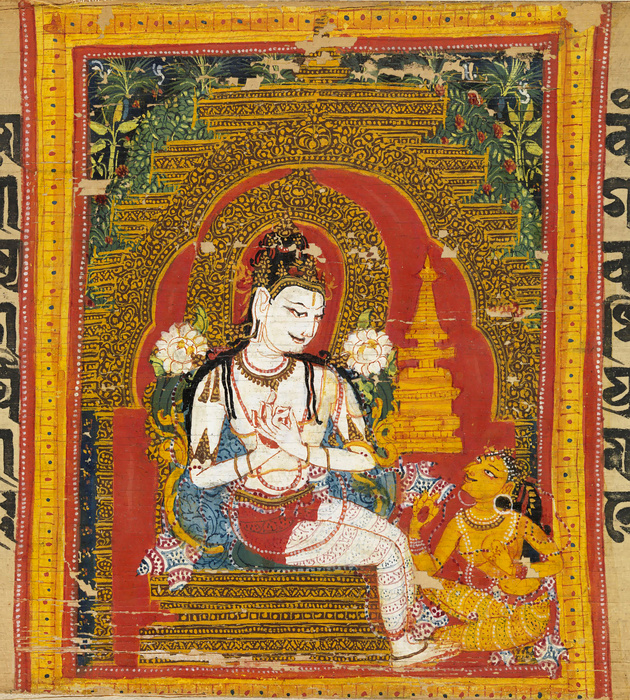|
Sangha (other)
Sangha () is a Sanskrit word used in many Indian languages, including Pali which means "association", "assembly", "company" or "community"; in these languages, sangha is frequently used as a surname. In a political context, it was historically used to denote a governing assembly in a republic or a kingdom, and for a long time, it has been used by religious associations, including Buddhists, Jains and Sikhs. Given this history, some Buddhists have stated that the tradition of the ''sangha'' represents humanity's oldest surviving democratic institution. In Buddhism, ''sangha'' refers to the monastic communities of ''bhikkhu'' (monks) and '' bhikkhuni'' (nuns). These communities are traditionally referred to as the ''bhikkhu-sangha'' or the ''bhikkhuni-sangha''. As a separate category, those Buddhists who have attained any of the four stages of enlightenment, whether or not they are members of the monastic community, are referred to as the ''āryasaṅgha'' ("noble Sangha"). ... [...More Info...] [...Related Items...] OR: [Wikipedia] [Google] [Baidu] |
Devanagari
Devanagari ( ; , , Sanskrit pronunciation: ), also called Nagari (),Kathleen Kuiper (2010), The Culture of India, New York: The Rosen Publishing Group, , page 83 is a left-to-right abugida (a type of segmental writing system), based on the ancient ''Brāhmī'' script, used in the northern Indian subcontinent. It was developed and in regular use by the 7th century CE. The Devanagari script, composed of 47 primary characters, including 14 vowels and 33 consonants, is the fourth most widely adopted writing system in the world, being used for over 120 languages.Devanagari (Nagari) , Script Features and Description, SIL International (2013), United States The |
Bhikkhu
A ''bhikkhu'' (Pali: भिक्खु, Sanskrit: भिक्षु, ''bhikṣu'') is an ordained male in Buddhist monasticism. Male and female monastics (" nun", '' bhikkhunī'', Sanskrit ''bhikṣuṇī'') are members of the Sangha (Buddhist community). The lives of all Buddhist monastics are governed by a set of rules called the prātimokṣa or pātimokkha. Their lifestyles are shaped to support their spiritual practice: to live a simple and meditative life and attain nirvana. A person under the age of 20 cannot be ordained as a bhikkhu or bhikkhuni but can be ordained as a śrāmaṇera or śrāmaṇērī. Definition ''Bhikkhu'' literally means " beggar" or "one who lives by alms". The historical Buddha, Prince Siddhartha, having abandoned a life of pleasure and status, lived as an alms mendicant as part of his śramaṇa lifestyle. Those of his more serious students who renounced their lives as householders and came to study full-time under his supervision als ... [...More Info...] [...Related Items...] OR: [Wikipedia] [Google] [Baidu] |
Dharma
Dharma (; sa, धर्म, dharma, ; pi, dhamma, italic=yes) is a key concept with multiple meanings in Indian religions, such as Hinduism, Buddhism, Jainism, Sikhism and others. Although there is no direct single-word translation for ''dharma'' in European languages, it is commonly translated as "righteousness", "merit" or "religious and moral duties" governing individual conduct.Britannica, The Editors of Encyclopaedia. (9 April 2019)Dharma. ''Encyclopedia Britannica''. Accessed 14 September 2021. In Hinduism, dharma is one of the four components of the '' Puruṣārtha'', the aims of life, and signifies behaviours that are considered to be in accord with ''Ṛta'', the order that makes life and universe possible. It includes duties, rights, laws, conduct, virtues and "right way of living".see: *"Dharma", ''The Columbia Encyclopedia'', 6th Ed. (2013), Columbia University Press, Gale, ; *Steven Rosen (2006), Essential Hinduism, Praeger, , Chapter 3. It had a transte ... [...More Info...] [...Related Items...] OR: [Wikipedia] [Google] [Baidu] |
Gautama Buddha
Siddhartha Gautama, most commonly referred to as the Buddha, was a wandering ascetic and religious teacher who lived in South Asia during the 6th or 5th century BCE and founded Buddhism. According to Buddhist tradition, he was born in Lumbini, in what is now Nepal, to royal parents of the Shakya clan, but renounced his home life to live as a wandering ascetic ( sa, śramaṇa). After leading a life of begging, asceticism, and meditation, he attained enlightenment at Bodh Gaya in what is now India. The Buddha thereafter wandered through the lower Indo-Gangetic Plain, teaching and building a monastic order. He taught a Middle Way between sensual indulgence and severe asceticism, leading to Nirvana, that is, freedom from ignorance, craving, rebirth, and suffering. His teachings are summarized in the Noble Eightfold Path, a training of the mind that includes meditation and instruction in Buddhist ethics such as right effort, mindfulness, and '' jhana''. He die ... [...More Info...] [...Related Items...] OR: [Wikipedia] [Google] [Baidu] |
Enlightenment In Buddhism
The English term enlightenment is the Western translation of various Buddhist terms, most notably bodhi and vimutti. The abstract noun ''bodhi'' (; Sanskrit: बोधि; Pali: ''bodhi''), means the knowledge or wisdom, or awakened intellect, of a Buddha. The verbal root ''budh-'' means "to awaken," and its literal meaning is closer to awakening. Although the term '' buddhi'' is also used in other Indian philosophies and traditions, its most common usage is in the context of Buddhism. ''Vimukti'' is the freedom from or release of the fetters and hindrances. The term "enlightenment" was popularised in the Western world through the 19th-century translations of German-born philologist Max Müller. It has the Western connotation of general insight into transcendental truth or reality. The term is also being used to translate several other Buddhist terms and concepts, which are used to denote (initial) insight ('' prajna'' (Sanskrit), '' wu'' (Chinese), '' kensho'' and ''satori' ... [...More Info...] [...Related Items...] OR: [Wikipedia] [Google] [Baidu] |
Three Jewels
In Buddhism, refuge or taking refuge refers to a religious practice, which often includes a prayer or recitation performed at the beginning of the day or of a practice session. Since the period of Early Buddhism until present time, all Theravada and mainstream Mahayana schools only take refuge in the Three Jewels (also known as the Triple Gem or Three Refuges, Pali: ''ti-ratana'' or ''ratana-ttaya''; Sanskrit: ''tri-ratna'' or ''ratna-traya'') which are the Buddha, the Dharma and the Sangha. However, only Vajrayana school includes an expanded refuge formula known as the Three Jewels and Three Roots. Taking refuge is a form of aspiration to lead a life with the Triple Gem at its core. Taking refuge is done by a short formula in which one names the Buddha, the dharma and the saṅgha as refuges. In early Buddhist scriptures, taking refuge is an expression of determination to follow the Buddha's path, but not a relinquishing of responsibility. Refuge is common to all major schoo ... [...More Info...] [...Related Items...] OR: [Wikipedia] [Google] [Baidu] |
Pāli Canon
The Pāli Canon is the standard collection of scriptures in the Theravada Buddhist tradition, as preserved in the Pāli language. It is the most complete extant early Buddhist canon. It derives mainly from the Tamrashatiya school. During the First Buddhist Council, three months after the parinibbana of Gautama Buddha in Rajgir, Ananda recited the Sutta Pitaka, and Upali recited the Vinaya Pitaka. The Arhats present accepted the recitations and henceforth the teachings were preserved orally by the Sangha. The Tipitaka that was transmitted to Sri Lanka during the reign of King Asoka were initially preserved orally and were later written down on palm leaves during the Fourth Buddhist Council in 29 BCE, approximately 454 years after the death of Gautama Buddha. The claim that the texts were "spoken by the Buddha", is meant in this non-literal sense. The existence of the bhanaka tradition existing until later periods, along with other sources, shows that oral tradit ... [...More Info...] [...Related Items...] OR: [Wikipedia] [Google] [Baidu] |
Mahayana
''Mahāyāna'' (; "Great Vehicle") is a term for a broad group of Buddhist traditions, texts, philosophies, and practices. Mahāyāna Buddhism developed in India (c. 1st century BCE onwards) and is considered one of the three main existing branches of Buddhism (the other being ''Theravāda'' and Vajrayana).Harvey (2013), p. 189. Mahāyāna accepts the main scriptures and teachings of early Buddhism but also recognizes various doctrines and texts that are not accepted by Theravada Buddhism as original. These include the Mahāyāna Sūtras and their emphasis on the ''bodhisattva'' path and ''Prajñāpāramitā''. '' Vajrayāna'' or Mantra traditions are a subset of Mahāyāna, which make use of numerous tantric methods considered to be faster and more powerful at achieving Buddhahood by Vajrayānists. "Mahāyāna" also refers to the path of the bodhisattva striving to become a fully awakened Buddha ('' samyaksaṃbuddha'') for the benefit of all sentient beings, and is thu ... [...More Info...] [...Related Items...] OR: [Wikipedia] [Google] [Baidu] |
Sotāpanna
In Buddhism, a sotāpanna (Pali), śrotāpanna (Sanskrit; , , Burmese: သောတာပန်, Tibetan: རྒྱུན་ཞུགས་, Wylie: ''rgyun zhugs''), "stream-enterer", "stream-winner", or "stream-entrant" is a person who has seen the Dharma and thereby has dropped the first three fetters (''Pāli: samyojana, Sanskrit: saṃyojana'') that bind a being to a possible rebirth in one of the three lower realms (animals, hungry ghosts and beings suffering in and from hellish states), namely self-view (''sakkāya-ditthi''), clinging to rites and rituals (''sīlabbata-parāmāsa''), and skeptical indecision (Vicikitsa). The word ''sotāpanna'' literally means "one who entered (''āpanna'') the stream (''sota''), stream-enterer", after a metaphor which calls the noble eightfold path a stream which leads to a vast ocean, nibbāna. Entering the stream (''sotāpatti'') is the first of the four stages of enlightenment. Attainment The first moment of the attainment is terme ... [...More Info...] [...Related Items...] OR: [Wikipedia] [Google] [Baidu] |
śrāvaka
Śrāvaka (Sanskrit) or Sāvaka (Pali) means "hearer" or, more generally, "disciple". This term is used in Buddhism and Jainism. In Jainism, a śrāvaka is any lay Jain so the term śrāvaka has been used for the Jain community itself (for example see Sarak and Sarawagi). Śrāvakācāras are the lay conduct outlined within the treaties by Śvetāmbara or Digambara mendicants. "In parallel to the prescriptive texts, Jain religious teachers have written a number of stories to illustrate vows in practice and produced a rich répertoire of characters.". In Buddhism, the term is sometimes reserved for distinguished disciples of the Buddha. Buddhism Early Buddhism In early Buddhism, a śrāvaka or śrāvikā is a disciple who accepts: * the Buddha as their teacher * the Buddha's teaching (the Dhamma), including understanding the Four Noble Truths, ridding oneself of the unreality of the phenomenal, and pursuing Nirvana (concept)">nirvana. See, for instance, the ''Anguttara Nikaya'' ... [...More Info...] [...Related Items...] OR: [Wikipedia] [Google] [Baidu] |
Nichiren Shoshu Buddhism
Nichiren (16 February 1222 – 13 October 1282) was a Japanese Buddhist priest and philosopher of the Kamakura period. Nichiren declared that the Lotus Sutra alone contains the highest truth of Buddhist teachings suited for the Third Age of Buddhism, insisting that the Sovereign of Japan and its people should support only this form of Buddhism and eradicate all others. He advocated the repeated recitation of its title, ''Nam(u)-myoho-renge-kyo'' as the only path to Buddhahood and held that Shakyamuni Buddha and all other Buddhist deities were extraordinary manifestations of a particular Buddha-nature termed ''Myoho-Renge'' that is equally accessible to all. He declared that believers of the Sutra must propagate it even under persecution. Nichiren was a prolific writer and his biography, temperament, and the evolution of his beliefs has been gleaned primarily from his own writings. He claimed the reincarnation of Jōgyō bodhisattva in a past life, and designated six seni ... [...More Info...] [...Related Items...] OR: [Wikipedia] [Google] [Baidu] |
Theravada
''Theravāda'' () ( si, ථේරවාදය, my, ထေရဝါဒ, th, เถรวาท, km, ថេរវាទ, lo, ເຖຣະວາດ, pi, , ) is the most commonly accepted name of Buddhism's oldest existing school. The school's adherents, termed Theravādins, have preserved their version of Gautama Buddha's teaching or ''Buddha Dhamma'' in the Pāli Canon for over two millennia. The Pāli Canon is the most complete Buddhist canon surviving in a classical Indian language, Pāli, which serves as the school's sacred language and ''lingua franca''.Crosby, Kate (2013), ''Theravada Buddhism: Continuity, Diversity, and Identity'', p. 2. In contrast to '' Mahāyāna'' and '' Vajrayāna'', Theravāda tends to be conservative in matters of doctrine ('' pariyatti'') and monastic discipline (''vinaya''). One element of this conservatism is the fact that Theravāda rejects the authenticity of the Mahayana sutras (which appeared c. 1st century BCE onwards). Modern Ther ... [...More Info...] [...Related Items...] OR: [Wikipedia] [Google] [Baidu] |




.jpg)



